
The markets continue their strong upward trajectory, and contrary to popular perception, gold has also surged to a fresh all-time high today.
Today, we’ll focus on the talk of the town — the Gensol Saga. Are investors trapped in the Gensol meltdown? That’s the core question we’ll explore in the latter half of this post, along with some critical lessons on how to avoid falling into similar traps in the future.
Where is the market headed?
Market Overview
After an almost gravity-defying five-day rally from 21,700 to nearly 23,300, the market continues to gain momentum. Today, we closed around the 23,400 mark, highlighting continued bullish strength. Shorts are clearly under pressure, and we’re edging closer to a potential trend change. The key resistance level remains at 23,800+, a zone where the market has turned down twice recently. If the bulls can push past this point, the shorts may lose control entirely.
Nifty ended the day up 0.5%
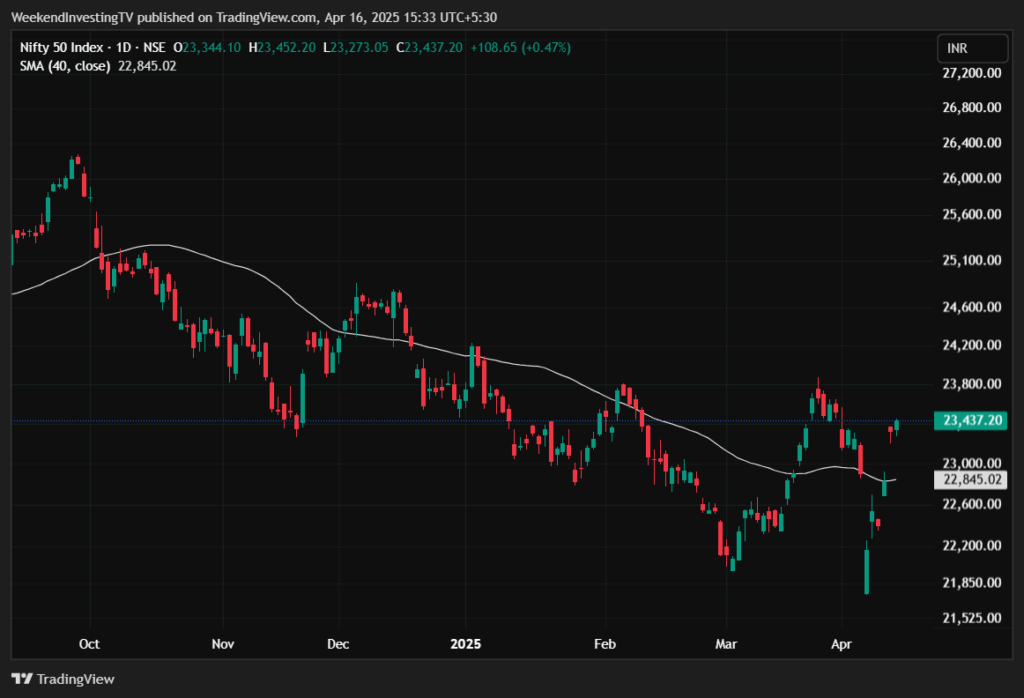
Nifty Next 50
The Nifty Junior rose by 0.67%, closing at its highest level since early February — a milestone not seen for nearly two months.
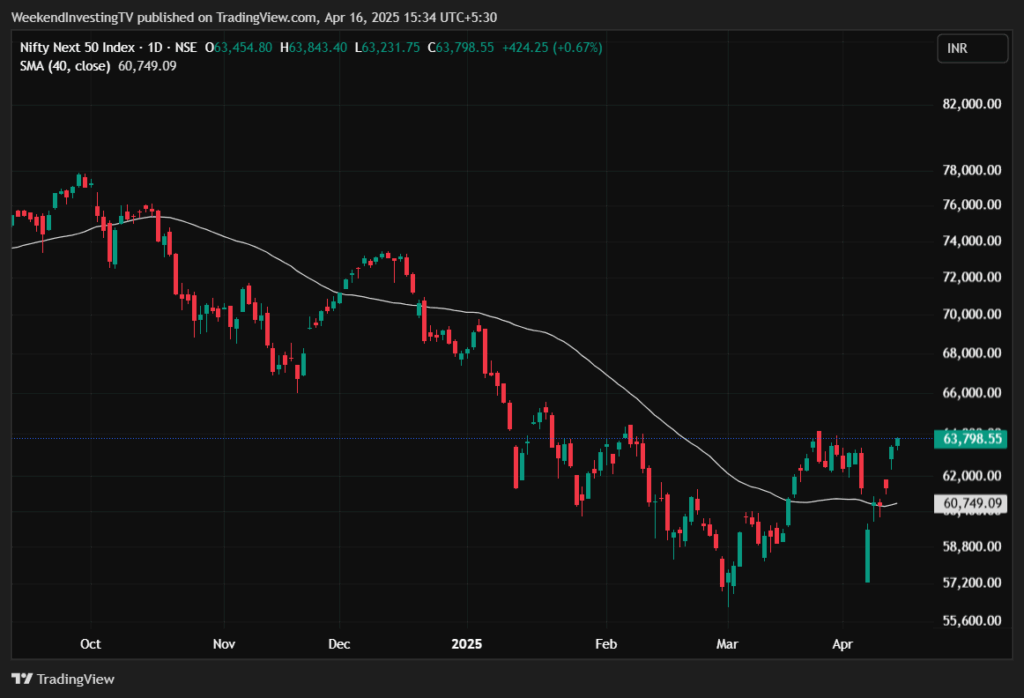
Nifty Mid and Small Cap
Mid-caps gained 0.74%, and small-caps followed with a rise of 0.94%, also moving into the February first-week range. All indices are showing strength.
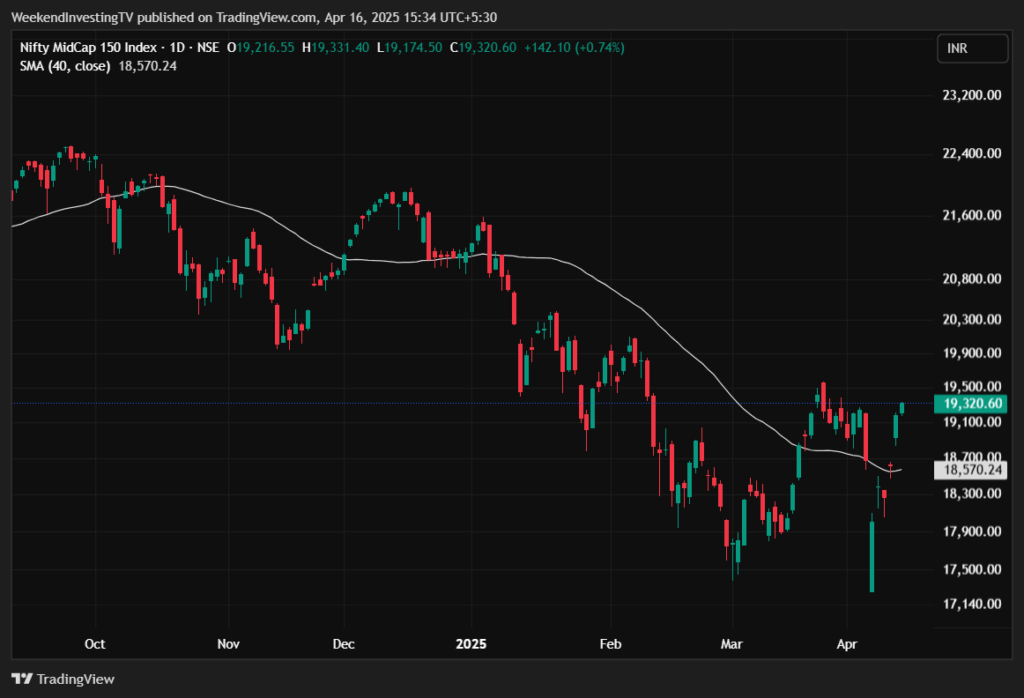
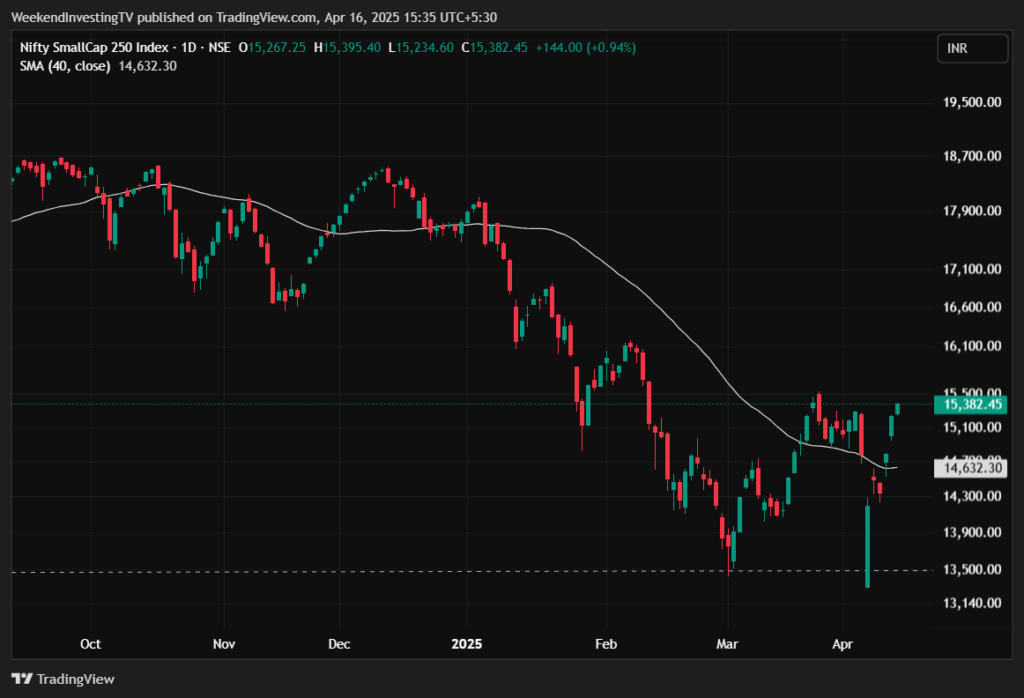
Bank Nifty
The standout performer continues to be the Bank Nifty, which gained 1.4% today. It is now just a few thousand points away from its all-time highs. Notably, Bank Nifty did not create new lows in March, unlike other indices, signaling relative strength early on.
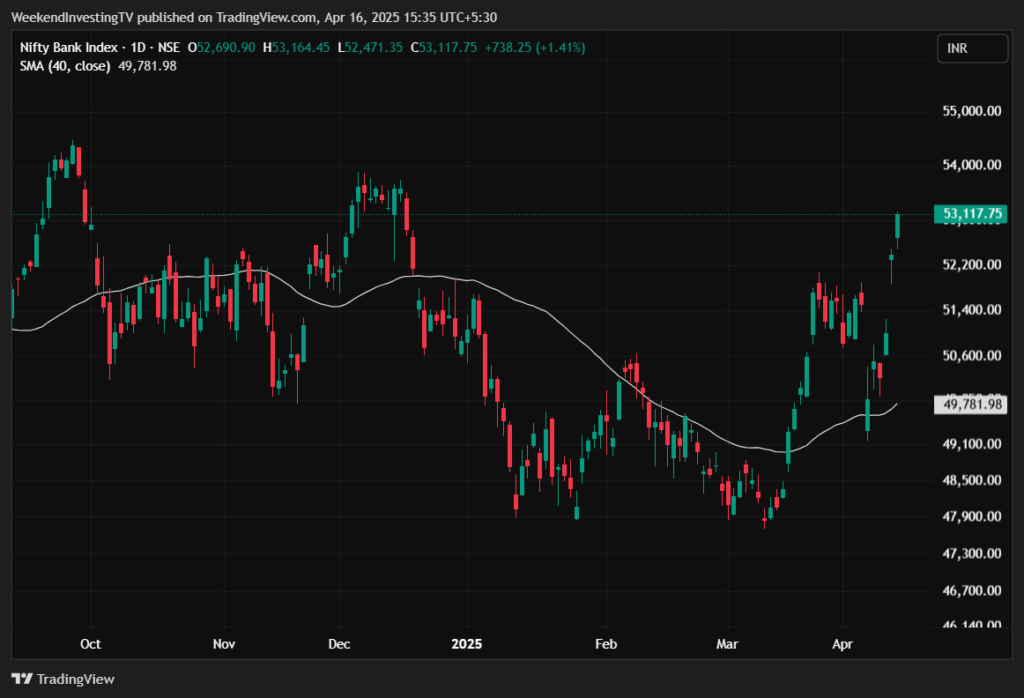
GOLD
Meanwhile, gold surged 2.23% today in Indian Rupee terms, reaching ₹96,400 — a stunning new high.
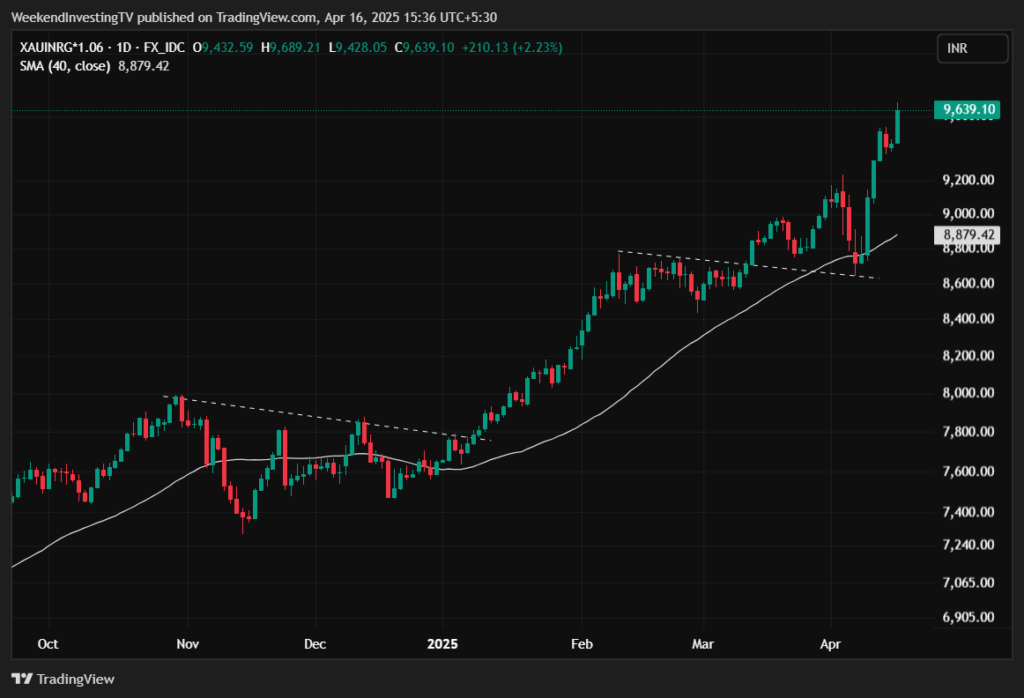
Advance Decline Ratio
The overall market breadth on April 16th stood at 363 advances versus 137 declines, indicating a strong tilt in favor of the bulls, although slightly less pronounced than the past two days.

Heat Maps
The heat maps were a mixed bag. On the upside, we saw notable gains in Trent, Adani Ports, Axis Bank, and ONGC, while stocks like Maruti, Infosys, NTPC, L&T, and Bajaj Finance gave up some ground.
In the Nifty Next 50 space, green dominated the screen. LIC, Chola Finance, GAIL, Havells, ABB, Bajaj Housing Finance, and Lodha saw decent gains, while DLF took a breather and some pharma names declined.
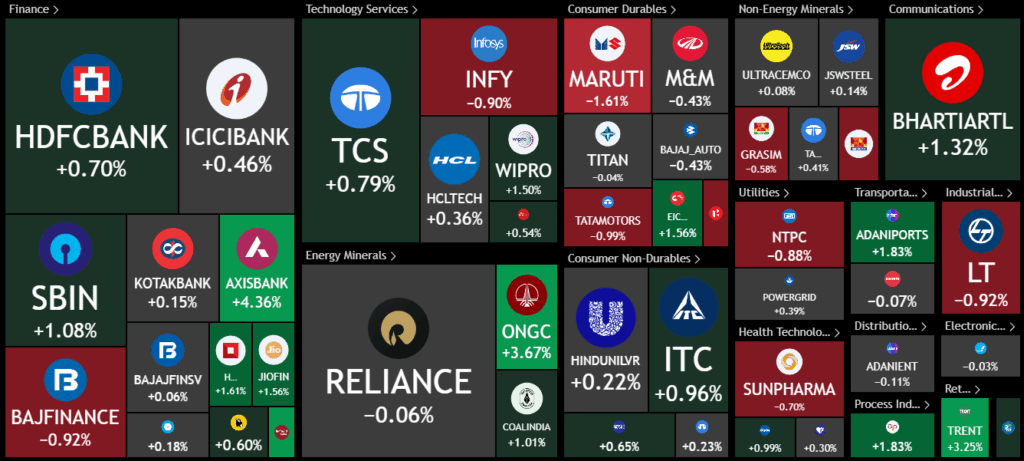
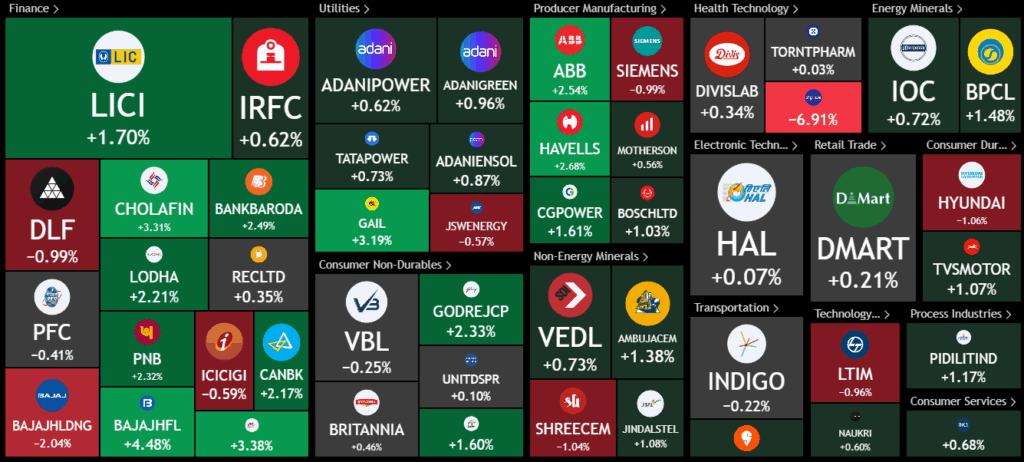
Sectoral Overview
From a sectoral perspective, PSU banks stole the show with a 2.4% gain, followed by private banks at 1.7%, media stocks at 1.9%, oil and gas at 1.3%, and energy at 1.1%. On the downside, auto and pharma stocks remained soft, with minor declines of -0.4% and -0.2% respectively.
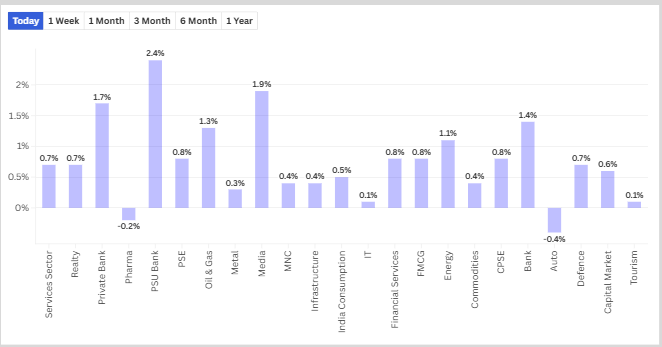
Sectors of the Day
Nifty PSU Bank Index
Interestingly, PSU banks are forming what looks like an inverse head and shoulders pattern, signaling a possible strong breakout. Stocks such as Indian Bank, Union Bank, Bank of India, Bank of Maharashtra, and Indian Overseas Bank are leading this charge.
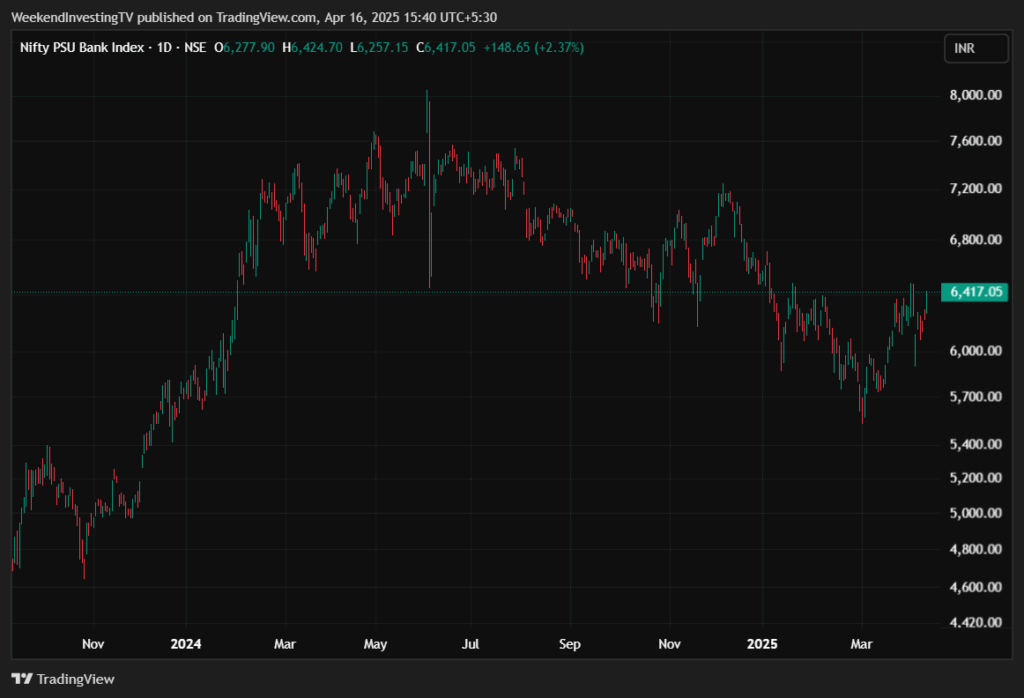
Story of the Day : Gensol Meltdown: What Went Wrong?
Now let’s discuss the Gensol Engineering crisis.
Gensol, known to many via BlueSmart EV taxis, is facing a meltdown. The stock has been hitting consecutive 5% lower circuits after SEBI barred the promoters from the securities market.
Originally, Gensol operated as a renewable energy EPC service provider before diversifying into EV leasing. The same promoter group ran both the EV operation and leasing entities.
From FY17 to FY24, revenue grew from ₹61 crores to ₹1,100 crores. Net profits surged from ₹2 crores to ₹80 crores. The company executed a 10-for-1 stock split, creating massive hype. Gensol became a blue-eyed EV play, attracting investors eager to ride the electric revolution.
But red flags appeared:
- Promoter holdings dropped from 70% in FY20 to 35% in FY25
- Rumors of loan defaults and manipulation started surfacing
SEBI’s investigation found that out of the ₹975 crores raised, ₹200+ crores were routed via a car dealer to promoter entities, used for luxury spending, apartment purchases, and personal use.
This was a complete failure of corporate governance.
Fake documents were submitted to credit agencies to mask defaults, eerily reminiscent of the Satyam scandal. The company was being run like a personal farm—not a public entity.
SEBI has now banned Anmol and Puneet Jaggi, the promoters, from the market and issued a warning to retail investors.
Despite all this, the stock had already fallen from ₹1,200+ to ₹120, an 83% crash.
Price Action Told the Truth
While promoters kept reassuring the public, the price action told the real story. If you were watching the charts, you’d have noticed early warning signs.
From July 2023 to January 2024, the stock rallied from ₹400 to ₹1,200. But then came the cracks:
- ₹1,400 to ₹800 in 4 weeks—a major red flag
- Brief recovery to ₹1,100, then back to ₹800
- From there, a vertical drop to ₹122
Technical exits were possible:
- Break of ₹800 should have triggered a stop-loss
- Another breakdown near ₹653, and later at ₹420
- 200-DMA breached below ₹1,000—classic sell signal
- Supertrend indicator went into sell mode at ₹900
Even though moving averages didn’t work perfectly due to limited history, basic support levels and trend indicators gave several opportunities to exit.
Sporadic volume spikes were another red flag—often occurring after TV appearances or stock splits, meant to draw in retail investors.
Don’t Let Emotions Drive Investing
Even after SEBI’s crackdown, some investors bought in, thinking the worst was over. But momentum only lasts while the trend is intact. Once the trend breaks, any rule-based strategy would have exited.
What traps most people is revenge trading. After taking a loss, investors try to recover in the same stock, averaging down, believing it’ll bounce back. But that’s a classic sunk cost fallacy.
Not only do you lose more money, but you also lose time and better opportunities elsewhere.
Interestingly, momentum strategies never picked Gensol, likely due to poor volumes. Even if they did, they would’ve exited quickly after early signs of weakness.
The Final Word: Always Have an Exit Plan
The key lesson? Every entry must have a clearly defined exit plan. Whether you’re investing based on momentum, fundamentals, or news, a lack of exit rules means you’re flying blind.
A stock without an exit plan is like a bad date with no goodbye—you’re stuck with the consequences far longer than you want.
So ask yourself:
Do you have a clear-cut exit plan for all the stocks in your portfolio?
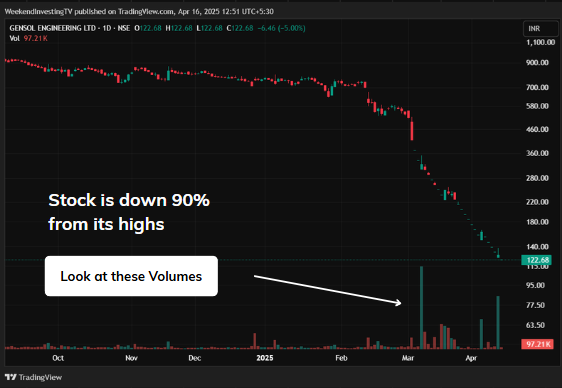
WeekendInvesting launches – The Momentum Podcast
🚀 The Momentum Podcast Episode 3 is Live ! 🎧
Join Rachit as he shares how he went from weekend investor to momentum master—turning painful F&O losses into powerful lessons.
Hear how he dodged a 30% portfolio crash with just a 4% drawdown, and discover his secrets to stress-free investing.
Don’t miss it—this one’s packed with insights!
Disclaimers and disclosures : https://tinyurl.com/2763eyaz






